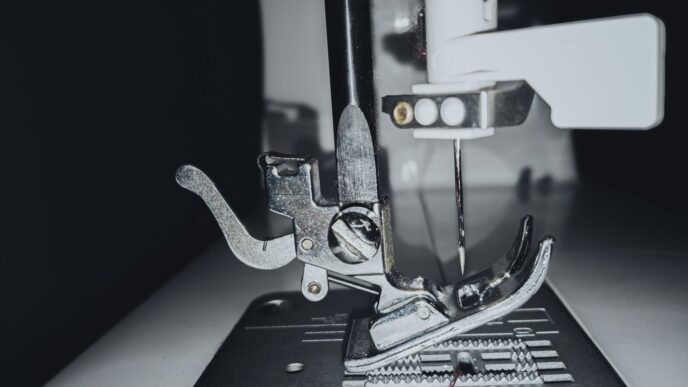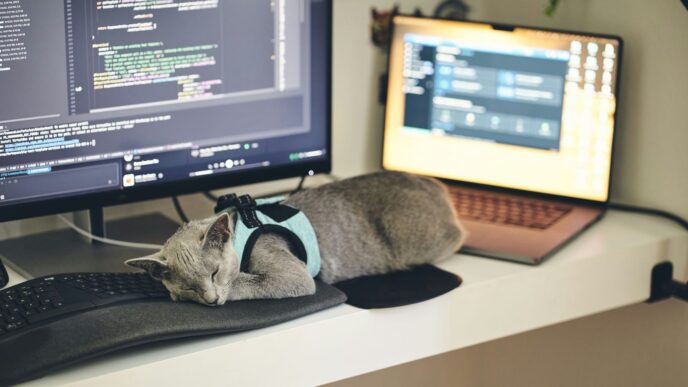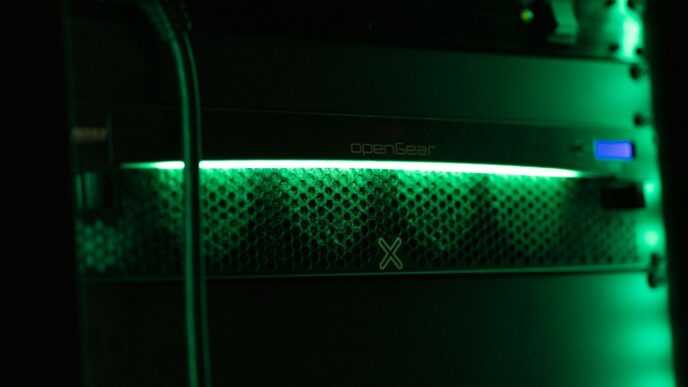Humane HP Collaboration: Redefining the Path for AI Wearables
The union of Humane and HP is starting to shift the conversation around what’s possible for AI-driven wearable tech. It’s not just a simple acquisition—there are lessons, intentions, and real changes happening under the surface. Here’s what’s really going on behind the scenes, and why this matters for anyone interested in the future of technology.
Strategic Motives Behind HP’s Acquisition of Humane
Let’s face it: Humane’s story didn’t end with the shining launch of their AI Pin. It fizzled. HP saw a strange kind of promise in that collapse. Picking up Humane didn’t just mean buying up a failed gadget. HP is hoping to get a jump start in an AI wearables market that could be massive, but right now is basically up for grabs. A few things HP seems to be betting on:
- Gaining access to advanced voice interface research and IP.
- Bringing in Humane’s team, which is already familiar with the big hurdles of screenless, ambient tech.
- Positioning itself ahead of consumer electronics giants and carving out its own vision before anyone else does.
They’re not just buying hardware. HP’s after the know-how—the do’s and the don’ts—that Humane lived through, while everyone else watched from a safe distance.
Impact of Humane’s Lessons on HP’s Device Roadmap
The Humane AI Pin showed how hard it is to launch something new in a world still glued to smartphones. HP’s roadmap is now shaped by these hard-learned truths:
- Don’t ignore what people are ready for. Humane’s downfall was in pushing a brand-new way of interacting before folks wanted it.
- Privacy and data safety have to come first, not as an afterthought (especially when devices have always-on microphones).
- Every new device must offer something that phones can’t—a real, lasting purpose, not just novelty.
The shift is toward quieter, smarter, more helpful wearables. Real-time data feedback and health support—think quality of life improvements, not just digital assistants that talk back.
Differentiating Factors in the Humane HP Partnership
Most partnerships end up sounding the same: promises, big launches, then either fizzle or fade into Google/Apple’s shadows. This one might be different for a few reasons:
- HP brings scale and hardware chops (supply chains, distribution, support) that startups like Humane never had.
- Humane’s failures offer more than just bruised egos—they’re a blueprint for what not to do if you want people to actually use your product.
- HP seems willing to listen and apply these lessons before hitting "launch" on the next big thing.
Here’s a quick table that sums up how Humane’s and HP’s approaches differ:
| Category | Humane | HP Post-Acquisition |
|---|---|---|
| Product Focus | Pure novelty | User-driven utility |
| Experience/Resources | Start-up scale | Global operations |
| Privacy Approach | Reactive | Proactive |
| Market Readiness | Speculative | Measured/responsive |
If things go as planned, this team-up could show the world how learning from past failures leads to better, smarter products—ones that fit their users’ lives, not just look cool on paper.
Learning From Failure: What Humane’s AI Pin Taught the Tech Industry
The Humane AI Pin story became a strange mix of buzz, hope, and—pretty quickly—letdown. Even though it promised a bold, smartphone-free future, the device fell flat, leaving behind lessons the entire tech world is now sifting through.
Challenges With Screenless and Voice-First Interfaces
Screenless wearables sound good on paper, but the experience can get messy. Humane wanted users to ditch displays and interact mostly through voice and a tiny projector. Reviewers struggled with missed commands, unreliable AI responses, and a clunky system that just didn’t click for everyday use. Here’s what stood out:
- Hard to see projections in daylight.
- Voice commands didn’t always work smoothly—lots of repeats and errors.
- The device often misunderstood context or fumbled tasks like navigation and texting.
- The learning curve felt steep and awkward compared to tapping a phone screen.
A device is only as useful as it is reliable, and if folks can’t trust it to get basic things right, they just won’t use it.
Market Readiness for AI-Driven Devices
It’s easy to get excited about new ideas, but not all markets are ready for radical change. Humane overestimated how eager people were to give up smartphones. Folks are used to their routines, and if a product wants to upend that, it must offer a clear, practical reason to switch.
| Factor | Humane AI Pin | User Expectation | Outcome |
|---|---|---|---|
| Price | $699 + $24/month | <$500, no fees | Disappointing |
| Utility vs. smartphone | Weaker | Match/Better | Disappointing |
| Everyday reliability | Often failed | High reliability | Disappointing |
As the table shows, the Pin didn’t meet basic user demands on cost or use. This mismatch led to poor sales and a fast drop in reputation.
Bridging the Gap Between Novelty and Practicality
There’s a wide gap between a flashy demo and something people use every day. Humane’s Pin had cool tech: palm projection, always-on listening, and minimalistic design. But here’s what went wrong:
- Confusing use cases—what problem was this supposed to solve?
- Lack of clear advantages over existing gadgets.
- Real-world use didn’t match the marketing hype—glitches and awkward moments killed the appeal.
Tech companies can’t just invent for invention’s sake; they need to solve actual problems. Successful devices don’t just "wow" in a promo—they fit into daily life naturally.
So, the industry took note: don’t bet everything on a radical idea unless you’ve nailed the basics. The Humane AI Pin, in a roundabout way, reminded everyone that it’s not just about breakthrough tech—it’s about making something people actually want to use.
Design and Intelligence: Jony Ive and OpenAI’s Joint Vision
Jony Ive and OpenAI working together feels like pairing two unlikely worlds: the obsessive attention to how things look and feel, and a single-minded focus on what technology can actually do. It’s a weird but interesting mix.
Fusing Form With Advanced AI Technology
It’s not every day that design legend Jony Ive partners with an AI powerhouse like OpenAI. The aim? Something a bit more ambitious than the next smartphone knockoff: a device that might pull AI out of the phone and put it, well, somewhere more useful and maybe even invisible.
Some key aspects of this approach:
- Hardware is being built around AI, not just stuffing AI into a pretty case.
- Simplicity is front and center—expect fewer buttons, fewer distractions, and more focus on utility.
- Industrial design and usability get equal attention to the large language models under the hood.
So far, details are scarce, but both companies want a product that sits comfortably in the background and doesn’t beg for attention every five minutes. The working idea is you have a helpful AI, everywhere, but without the constant screen time.
How the Humane HP Story Shapes Future Design Choices
The Humane AI Pin was a splashy flop, and if there’s one thing this new collaboration understands, it’s the value of learning from someone else’s public missteps. Ive and OpenAI have a front-row seat to these lessons:
- Don’t skip over practical needs in favor of wild design.
- Reliability and clear purpose matter way more than hype.
- Launching with a defined use-case is crucial—nobody needs a solution searching for a problem.
In fact, the idea seems to be to start small, nail the basics, and expand only once it works. If the Humane Pin taught the industry anything, it’s that customers hate fumbling with half-baked tech, no matter how futuristic it looks.
Defining a New Hardware Paradigm Beyond Smartphones
When you look at how fast phones replaced so many other gadgets, it’s easy to assume the next step is just more phone with more AI. But that’s not the play here. This new device is trying to be something in between—less of a full-on replacement and more of a smart layer you can use (or ignore) when you want.
Here’s how this new approach stands out:
- Moves away from big screens and tapping. The goal is for devices to blend in, not take over your attention.
- Feels personal, but not intrusive—think subtle cues, not constant interruptions.
- Designed to be trusted, not just impressive. Privacy, discretion, and speed are all on the table from day one.
If they pull it off, this could mark a bigger shift than just a new gadget—it may change how and when we interact with technology throughout the day.
The jury’s out on whether they can beat the smartphone at its own game, but the direction is clear: less is more, and the right mix of brains and style could finally give us a new way to interact with machines—and maybe even each other.
Building Reliable User Experiences in AI-Driven Devices

Designing an AI-driven device isn’t just about making something flashy. Reliability shapes whether everyday folks will actually stick with it and trust it with their routines. That means getting the basics right—speed, privacy, usability—while learning from past experiments like the Humane HP collaboration.
Addressing Latency, Speed, and On-Device Processing
Even the smartest device isn’t helpful if you have to wait ages for a response. One of the biggest complaints about earlier AI wearables, like the Humane AI Pin, was how slow or spotty it felt. When a user asks their wearable something simple—"remind me to call Sam" or "what’s that song playing?"—they need it now, not 20 seconds later. Connectivity hiccups make people give up fast.
Here’s where the best devices find a balance:
- Quick, local processing for basic tasks or wake words. If your device can answer "what time is it?" without the cloud, you don’t need to worry about dead zones.
- Cloud help only when necessary. More complex requests (translating speech, summarizing news) can use the cloud, but fallback options matter.
- Transparent user communication. If something’s not working due to bad signal, tell the user instantly, instead of forcing them to guess.
| Task Type | Processed On-Device | Requires the Cloud |
|---|---|---|
| Alarm/Timer Set | Yes | No |
| Real-Time Translation | Partial | Yes |
| Wake Word Detection | Yes | No |
| General Knowledge Query | No | Yes |
Ensuring Privacy and Trust in Always-On Assistants
If a gadget is listening in all day, that can weird people out. Building any kind of trust starts with clarity:
- Users should always know when the device is recording or listening.
- "Private-by-default" means nothing goes to the cloud unless necessary, and only with clear consent.
- Give people control—easy ways to pause listening, delete recordings, or turn off always-on features.
- Be transparent about what data is stored, for how long, and how it can be deleted.
Some newer devices handle wake word detection only on the chip itself, which reassures users. But even then, companies should spell out the details. If you need to upload anything for complex processing, make it obvious and opt-in.
Lessons in Usability and Adoption From the Humane HP Narrative
The Humane HP effort taught some tough lessons about what real users want:
- Nobody wants to learn a whole new system just to get reminders or directions. Keeping interactions familiar (think: natural voice commands, simple physical buttons) helps people get started.
- Confusing behaviors or laggy responses kill excitement fast. Even small annoyances—like not knowing if the device understood you—turn into deal breakers quickly.
- Social considerations matter. If your device makes you look or feel out of place (like talking loudly to a voice assistant in public), people will be embarrassed to use it.
Key takeaways?
- Start with reliable basics before adding wild features.
- Reduce friction: clear feedback, fast responses, and simple error fixes.
- Respect users’ boundaries on what’s shared, stored, or always-on—trust is easy to lose and hard to win back.
Building reliable AI experiences is about making everyday life easier, not harder. A wearable can’t just impress in demos; it has to work in the real world, day after day, for everyone—tech geeks and skeptics alike.
Market Entry Strategies: Evolution Versus Revolution in Wearable AI
The wearable AI world isn’t as straightforward as making the next shiny gadget. Companies like HP and Humane are facing a big question: should they update things slowly (evolution) or throw all the old rules away and make something totally different (revolution)? Getting this wrong can mean wasting money and losing consumer trust (as Humane’s AI Pin showed).
Iterative Improvements Versus Radical Overhauls
It’s tempting to promise a brand-new future for everyone, but historically, tech that succeeds usually builds on what people already know.
- Slow and steady means small changes people are comfortable with—like making a watch smarter each year. Radical change, on the other hand, can be risky, especially if people don’t see the point.
- The Apple Watch took years to find its pace. Google Glass, meanwhile, flopped hard because it felt too strange.
- Mixing old and new features—like using voice but also a small screen—can help folks adjust.
| Approach | Pros | Cons |
|---|---|---|
| Iterative | Easier adoption, familiar, fewer support headaches | Low excitement, slower to reach goals |
| Revolutionary | Can redefine markets, grabs headlines | High failure rate, people get confused |
The Role of Ecosystem Synergy Versus Standalone Bets
A wearable device isn’t just a gadget; it’s part of a bigger picture. If it plugs into your phone, laptop, or even your fridge, it feels less intimidating.
- Being compatible with popular smart home and phone systems is a safe move.
- Standalone devices are harder to sell because users have to learn something totally new.
- Ecosystem synergy also means customers are less likely to switch to a competitor once they’re invested.
Targeting Niche Segments Before Mass Adoption
Trying to please everyone right away often leads to pleasing no one. Some of today’s most popular gadgets started in very specific communities.
- Smartwatches were initially a hit with fitness buffs—then gradually caught on with everyone.
- Early AI tools are first useful for tech lovers or certain professionals, and only after success do they become mainstream.
- Choosing a niche group (like cyclists, doctors, or remote workers) may lead to early loyalists and useful feedback.
In reality, the story of market entry in wearable AI is rarely about overnight disruption. It’s more of a series of experiments—some safe, some bold. Learning from both success and failure is the only truth so far—just ask Humane and HP.
Ethics, Regulation, and Public Perception in AI Wearables

Navigating User Privacy and Data Protection
The rise of AI-powered wearables brings up tough questions around privacy and data security. These devices often come with always-listening microphones and cameras. People worry who controls recordings, what gets saved, and whether strangers can be recorded or analyzed without them knowing. Tech companies like HP and Humane need rock-solid privacy standards if they’re going to win public trust.
- Devices should minimize how much personal data they collect by default—gather only what’s truly needed.
- Users must have easy-to-understand controls to see, delete, or export their data.
- Companies need honest, plain-English privacy disclosures—no more unreadable fine print.
A simple overview comparing privacy features by brand might look like this:
| Company | Default Data Retention | On-Device Processing | User Data Controls |
|---|---|---|---|
| Humane HP | 7 days | Yes | Full access |
| Apple | 14 days | Yes | Full access |
| 30 days | Partial | Limited |
Anticipating Regulatory Scrutiny in New Markets
Laws around AI are still catching up, leaving wearable makers to guess what future rules will look like. Different countries have different requirements, especially for features like voice assistants, facial recognition, and location tracking. For example:
- Consent laws: In some places, it’s illegal to record someone without their knowledge—even by accident.
- AI safety: The EU demands evidence that AI tools work as promised and don’t cause harm.
- Data sharing: Some governments may want backdoor access or limit where data is stored.
Companies are already building in self-regulation—like keeping recordings on-device and making sure users control what gets shared—to avoid lawsuits and fines before the rules are crystal clear.
Geopolitical Implications of AI Hardware Manufacturing
Where wearables are made is becoming just as important as how they’re built. Manufacturing location affects international trade and exposes companies to questions about labor standards, national security, and ethical sourcing.
- Some governments might ban devices made in certain countries, worried about backdoors or spying.
- Human rights groups look at whether factories follow safe working conditions and labor laws.
- Political tensions can disrupt supply chains or lead to surprise tariffs, spiking costs overnight.
These are no longer just background worries—they can hit device rollouts or even determine what features get shipped where. Public perception, guided by news reports or watchdog groups, has real power to shape the success or failure of AI in everyday gadgets.
The Future Battleground: Humane HP, Apple, and the Race for AI Supremacy
The race to rule the next generation of smart devices isn’t about who packs in the most tech or throws around the most buzzwords—it’s about who finds the sticky blend of usefulness and trust. Apple, with its patient path and Apple Watch ecosystem, is the current heavyweight. But there’s rumbling, with HP now steering Humane’s ideas and the Jony Ive/OpenAI venture looming. Everyone wants to rethink the personal device, but only one approach will click with real people.
Comparing Ecosystem-Driven and AI-First Approaches
If you look at Apple, their process is all about slow changes. They keep building on what works, folding more AI into gadgets that millions already use. HP, after scooping up Humane, has a chance to try again—maybe with smarter moves and less risk. Meanwhile, Jony Ive and OpenAI want something wild: a whole new device, not chained to your phone, led by raw AI.
Here’s how it stacks up:
| Approach | Apple | Humane HP | Ive & OpenAI |
|---|---|---|---|
| Evolution/Revolution | Evolution | Correction of Revolution | Revolution |
| Ecosystem | Deep, mature | Early, learning | None yet (proposed) |
| User Trust | High | Recovering | Unknown |
| AI Depth | Increasing | Dependent on HP | Advanced (OpenAI) |
- Apple’s power is keeping people inside a system they already trust.
- Humane HP may walk back from risky leaps and focus on something more practical.
- Ive/OpenAI could nail the "AI-first" machine if they solve problems Humane couldn’t: reliability, clarity, and a real-world use case.
Sustaining Brand Trust Amid Technological Disruption
Brand matters when you ask people to try something new. HP’s challenge is to rescue Humane’s ideas from the flop of the AI Pin and show they’ve learned their lesson. Apple, on the other hand, can stick new tricks into old favorites. Trust isn’t built in a day:
- Apple maintains loyalty by not forcing change too fast.
- HP must prove it can improve what Humane started.
- Ive/OpenAI have to inspire excitement and confidence in something totally fresh.
If you ask users to risk their money on a brand new device, they’ll need proof it works—no exceptions. The only thing harder than building a great product is resetting public opinion after a failed launch.
Forging Consumer Loyalty in a Shifting Market
So, what actually keeps people coming back?
- Familiarity – Users like products that slot into their daily routines without surprises.
- Reliability – No one wants their assistant to freeze or flake out in a crunch.
- Privacy – Folks want to know their data is safe (especially when devices listen 24/7).
- Value – People buy devices that solve a problem, not just show off clever tech.
As Humane HP, Apple, and the new Ive/OpenAI project tussle, the real contest is for hearts and habits—not just headlines. Apple has the patience and trust; HP is betting on lessons learned; and Ive with OpenAI aim to change the game entirely. The winner? It’ll be whoever can make everyone’s lives genuinely easier—and maybe even a little more fun.
Conclusion
So, looking at everything that’s happened with the Humane HP collaboration, it’s clear the road to the future of AI-driven devices is anything but smooth. Humane’s AI Pin had big dreams, but in the end, it just didn’t click with people. HP stepping in and shutting it down really shows how tough this space is, and how even the coolest ideas can flop if they don’t fit into people’s lives. The whole story is a reminder that tech needs to be more than just new—it has to be useful, easy, and actually wanted. As OpenAI and others try to build the next big thing, they’ll need to pay close attention to what went wrong here. It’s not just about having smart AI or fancy hardware; it’s about making something that people actually want to use every day. The future of AI gadgets is still wide open, but if there’s one thing to learn from Humane’s journey, it’s that listening to users and solving real problems will matter way more than just chasing the next headline.














